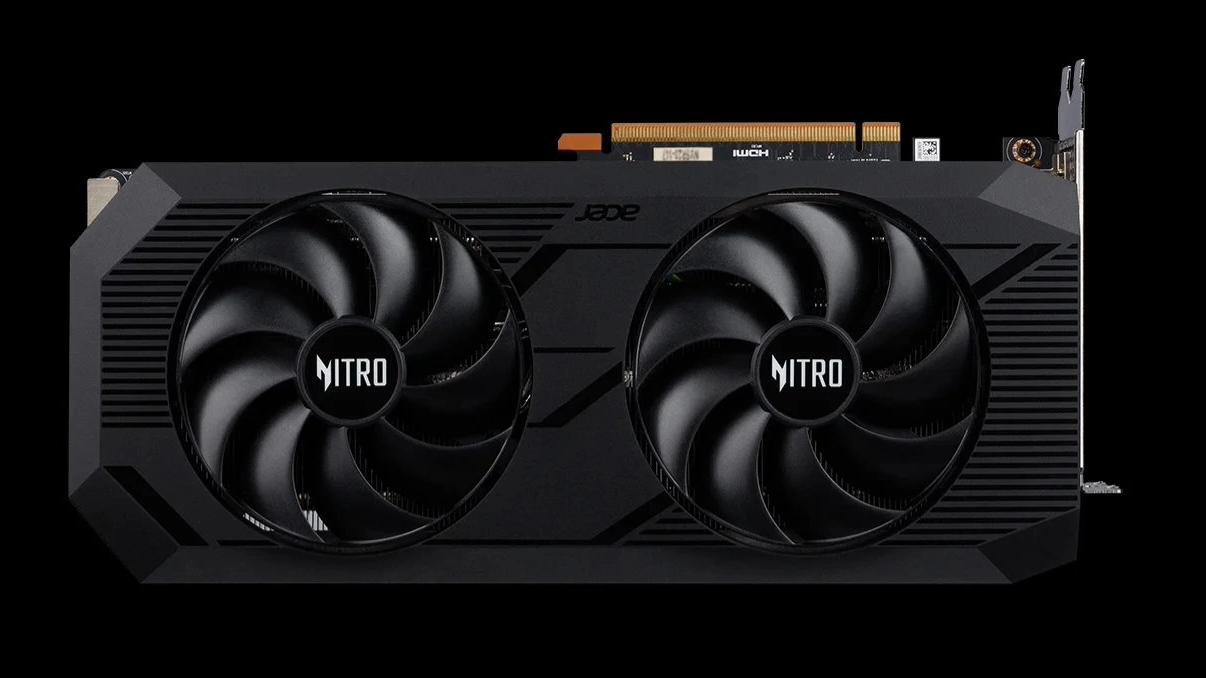
Earlier today, Acer dropped its Nitro Shadow Knight RX 7800 XT in the Chinese market, just a few months after showing it off at CES 2024 [h/t ITHome.com]. Admittedly we didn't get our hands on it during the show— some other Acer oddities caught our attention at the time— but the latest "Shadow Knight" in Acer's lineup does seem interesting. The same card also launched as the "Nitro" in the U.S. and other areas, with the Acer Nitro RX 7800 XT priced at $519.99 at Newegg. That puts it in direct competition with the RTX 4070, and not far off the RX 7900 GRE, both of which are among the best graphics cards.
Our GPU benchmarks hierarchy puts the RX 7800 XT squarely between the RTX 4070 Super and RTX 4070 in rasterization performance. Ray tracing workloads as usual drop AMD quite a bit, with the RX 7800 XT performance landing just above the RTX 4060 Ti. Acer's card comes with a dual-fan 2.5-slot form factor, which may be a draw for those looking for something slightly more compact. Let's quickly look at the core specs.
Acer Nitro Shadow Knight RX 7800 XT Official Specifications
- GPU Cores: 3840 RDNA 3 shaders / 60 Compute Units
- GPU Core Clock: Up to 2565 MHz (Stock 7800 XT is 2430 MHz)
- Ray Accelerators: 60 (1 per GPU core)
- AI Accelerators: 120 (2 per GPU core)
- GPU Memory: 16GB GDDR6
- GPU TGP: 281 Watts (Stock 7800 XT targets 263 Watts)
- GPU Dimensions: 279 x 129.62 x 50.42 millimeters
Official base MSRP on the RX 7800 XT is $499, but pressure from the RTX 4070 and RX 7900 GRE has pushed the minimum cost GPU down to $479 for the ASRock 7800 XT at the time of writing. That makes the Acer model a more difficult sell, though the decent overclock on the GPU does help a bit. Given the rest of the market, we think the 7800 XT needs to come in well below $500 these days.
Acer also touts low noise as a benefit of the Nitro / Shadow Knight RX 7800 XT, and says the "Frost Blade" fans reduce noise levels by 2.4 decibels and increase airflow by as much as 9.7% (though we're not sure what it's using as a comparison point). Improved cooling noise levels, coupled with the increased TGP and Boost Clock, help the card stand out, at least on paper, but we'll have to see some independent testing before drawing any final verdict.
Ultimately, final pricing will end up making or breaking this card. A decent overclock should close the gap between it and the 7900 GRE / 4070 Super, though the former remains our primary pick. The market has no shortage of overpriced AIB cards, and data like the Steam Hardware Survey suggests AMD's RX 7000-series isn't doing too well against the RTX 40-series. Hopefully, Acer's foray into the dedicate GPU market can help bring prices down, as we've seen with its Arc-based offerings.
[Note: Our initial story didn't see the U.S. Nitro listings, which appear to be effectively the same, perhaps with a 5 MHz difference in boost clocks. We've updated the story to reflect the apparent worldwide availability of the Acer cards.]







